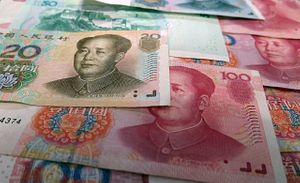The Chinese government has felt for years that its investments are trapped in the so-called sunset industries such as steel, coal and cement. As China moves away from an investment-driven economy toward a consumption-driven economy, these heavy industrial SOEs become not only increasingly irrelevant but also costly. SOEs require government finance to stay afloat and have been repeatedly bailed out. With these funds gone, the government feels restrained in its ability to foster new industries, including resources and artificial intelligence.
Against this backdrop emerged the government investment reallocation plan. This plan will see some designated companies take on the role of investor in desired industries and pursue divestment from sunset industries. Through active trading of stocks, government investments are expected to be reallocated into sectors that are either strategically important or commercially viable. For this to happen, two obstacles should be removed for SOE parent firms.
First, SOEs need to be restructured into either limited liability or joint-stock companies. This requires SOEs previously registered in accordance with the Enterprise Law to re-register under the Company Law. Under the Enterprise law, SOE operations — especially those affecting their assets — require government approvals. After re-registration, the government will no longer control SOE operations but rather focus on maximizing investment returns in SOEs. With the introduction of private investors and new governance structures, SOEs will be able to operate with modern company practices such as independent boards and professional managers.
Although 92 percent of SOE subsidiaries have finished restructuring thanks to reforms in the 1990s, most parent firms — 69 out of 101 — had not as of 2016. After two years of preparation, in June 2017 the government ordered all SOEs to restructure into corporations by the end of the year, which should help pave the way for further reforms.
Second, state-owned assets will need to be liquidated. In practice, the assets of the parent companies will likely be injected into listed subsidiaries. Initial public listing may also be sought if this is unfeasible.
This transformation serves both practical and political functions. State assets will undergo inventorying, appraising and pricing and have prerequisites for open trading. Additionally, reducing the losses of state assets will diminish attempts by the conservative side to prevent reforms or even attack reformers. But this wholesale style, where all the assets of individual SOE units are packed together instead of selling assets piece by piece, may limit the market for state-owned assets.
Following this transformation, SOEs will restructure to reallocate state-owned investments, while becoming so-called state capital investment companies and state capital operation companies. Despite being the most important step, designated companies are surrounded by inconsistent practice and incomplete policy.
Inconsistent implementation stems from different interests. Although the SOE regulator, State-owned Assets Supervision and Administration Commission (SASAC), is actively appointing pilots, almost all SOEs have jumped the gun and adopted their own pilot practices. In addition, according to SASAC’s plan, as the number of SOEs is reduced to 80, there should be 22 or 23 designated companies and 50 industrial SOEs. It remains to be seen how SASAC will align SOE’s interests with its policy.
Current policies are also unclear as to how designated companies should fit into ongoing initiatives, such as the current push for SOE mergers and acquisitions (M&As). The government attributes low efficiency to small-scaled and wide-spread operations and hopes M&As will increase market concentration and retire outdated capacities. For example, the government aims to concentrate 60 percent of total steel capacity in the top ten producers by 2020 while removing all sub-standard capacity in 2017 after rounds of M&As of steelmakers.
Despite the mess, the current approach of the government to treat SOEs as investments for returns is the right step to reduce its interference in enterprise operations. The effort to sell inefficient SOEs in the capital market also breaks many barriers to state sector reduction, though the wholesale style may pose risks. If well-implemented, SOEs in the commercial sector will gain more autonomy to respond to market signals and will dispose of some loss-making operations.
The newly introduced financial holding model also has potential. Borrowing from the financial market, designated companies and their followers have restructured parent firms and subsidiaries as holding firms do with their investments. Equipped with investment funds, these companies will have sufficient financial resources to acquire operations to hold or dissolve. Although leading to significant SOE financial restructuring and lacking established examples, the restructuring will hopefully fine-tune SOE operations and improve their efficiency.
The issues mentioned above can be straightened out if SASAC authorities designated companies to control and reshuffle industrial SOEs. Designated companies will carry out industrial SOE M&As on the micro level and government investment reallocation on the macro level. Industrial SOEs as subsidiaries of designated companies should focus on production, not financial restructuring.
But afraid of being marginalised by empowered companies, SASAC is insistent that designated companies are parallel to industrial SOEs and that it holds the ultimate authority on both. The upcoming release of SASAC policy on designated companies in 2017 may shed more light on how Beijing plans to overcome the obstacles to SOE autonomy without reducing its power.
Xinling Wang is a research manager at China Policy, Beijing. This piece originally appeared over at East Asia Forum and is republished here with kind permission.

































